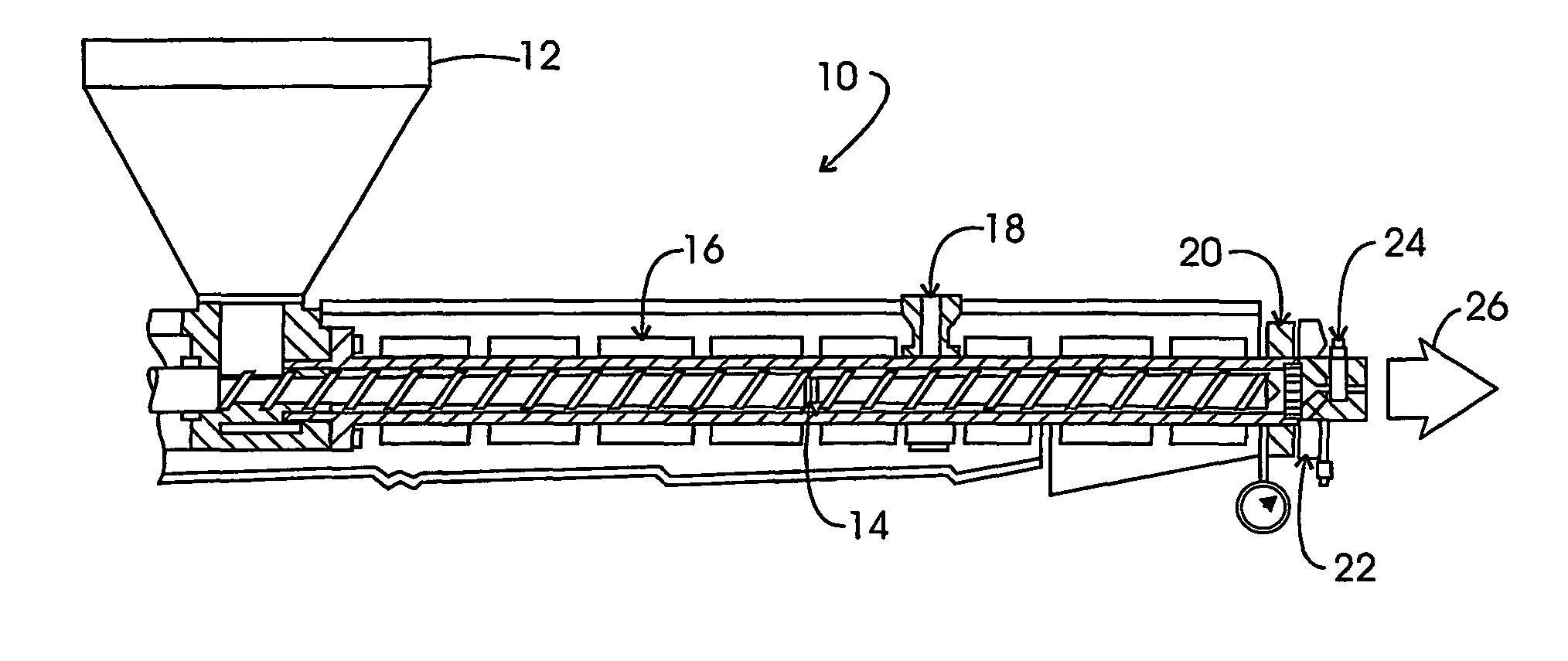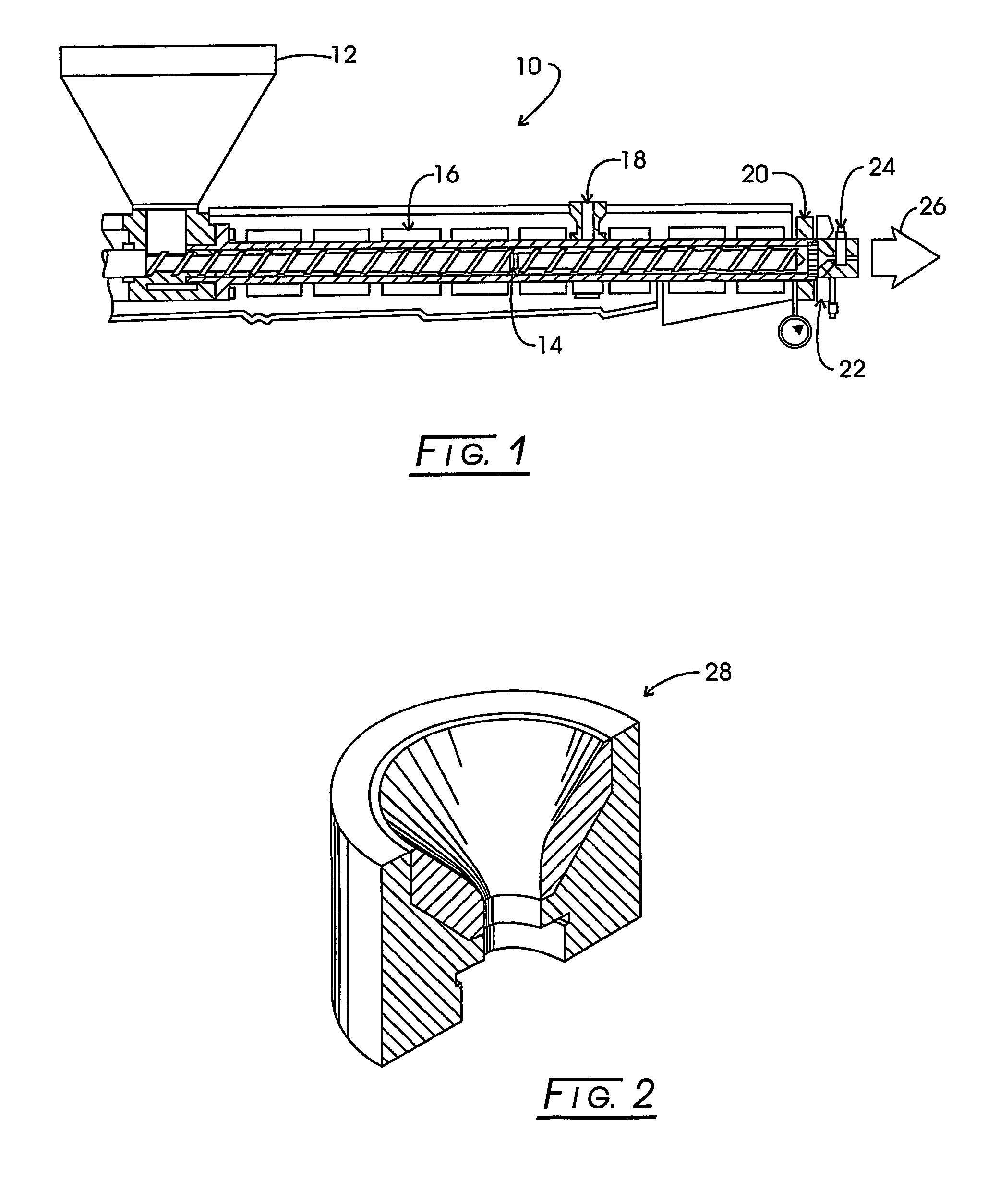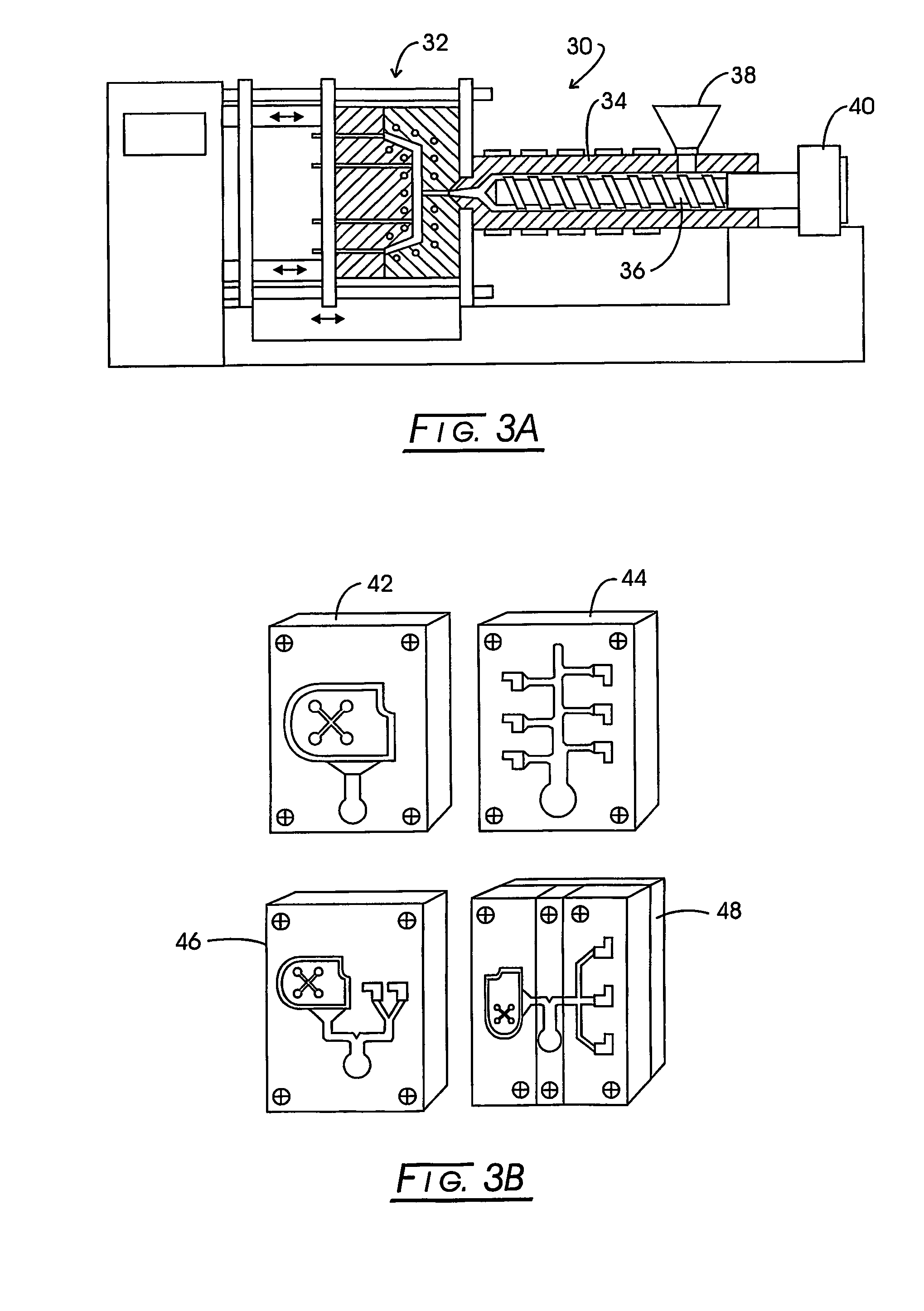Process equipment wear surfaces of extended resistance and methods for their manufacture
a technology of process equipment and wear surfaces, applied in the field of process equipment, can solve the problems of process equipment wear, accelerated abrasion, corrosion, and/or erosion, and solid webs also present process equipment wear surfaces with accelerated abrasion, corrosion, and/or erosion, and achieve the effect of extended resistance to one or more of abrasion, extended resistance, and extended resistan
- Summary
- Abstract
- Description
- Claims
- Application Information
AI Technical Summary
Benefits of technology
Problems solved by technology
Method used
Image
Examples
example 1
[0104]A punch and die set is comprised of a die, 62, an upper punch, 64, and lower punch, 66, and a core rod, 68, as shown in FIG. 5, where all parts are made of 1.2379 steel having a Rockwell C hardness of 63. The die set is used for forming a ring or small wheel from a phenolic resin powder, 70, that contains 10 to 20 weight percent cubic boron nitride abrasive filler having a particle size of 400 mesh or coarser. In normal operation, the punch and die set is assembled as in FIG. 5 and the plastic powder is pressed between the two punches. When a load is placed on the punches, the powder compresses and the abrasive particles scratch the sides of the die and core pin. After approximately 50 to 60 cycles, the wear zone caused by the abrading particles in the filler becomes so pronounced (particularly adjacent to powder 70) that the resin disk that is formed is outside the allowable dimensional tolerance and the punch and die set must be replaced.
[0105]In demonstrating this invention...
example 2
[0133]A pressure roll, 72, as shown in cross-section in FIG. 6 was used for forming a cement composite material into pipes. The normal pressure roller is a 96 mm diameter by 835 mm long roll made from DIN 2448 stainless steel. In the normal mode of operation, 24 pressure rolls, in two sets of 12 each, apply uniform pressure to a roll that is in direct contact with the cement composite material. As the cement material contacts the roll, a small layer of the abrasive cement is retained on the surface of the roll and, as this rotates, is carried across the pressure rolls. Over a period of 4 to 6 weeks of continuous operation, the roll surfaces wear away, usually in non-uniform levels from roller to roller. The normal wear pattern that forms is a series of very obvious grooves across the face of the roll. The depth of the grooves determines the severity of the wear. The non-uniformity of this wear results in unacceptable thickness variations in the cement pipe that is being formed. At t...
example 3
[0137]A steel-body, drag-type drill bit, 74, as shown in FIGS. 7A and 7B, normally is used for drilling oil wells. Steel body bits range in diameter from 8 inches to over 17 inches. The steel body bits are made in a variety of configurations, but generally are comprised of the threaded pin connection, 76, a bit breaker slot, 78, a shank, 80, a gauge, 82, over which rides blades, 84a-d, that can have various configurations that are normally arranged in a symmetrical pattern of 2 to 10 blades. In some cases, gauge 82 may be a full or partial ring. Onto each blade are brazed the polycrystalline diamond cutters (PDC), as PCD cutter 86, that are arranged according to the cutting efficiency that is required for each bit. Within the main body of the bit is a shank bore, 88, that extends up to gauge 82 of bit 74. From the end of shank bore 88, smaller holes, as small bore 90, are drilled and extend out between the blades. The smaller holes are normally threaded so that nozzles, as nozzle 92...
PUM
| Property | Measurement | Unit |
|---|---|---|
| thickness | aaaaa | aaaaa |
| thickness | aaaaa | aaaaa |
| thickness | aaaaa | aaaaa |
Abstract
Description
Claims
Application Information
 Login to View More
Login to View More - R&D
- Intellectual Property
- Life Sciences
- Materials
- Tech Scout
- Unparalleled Data Quality
- Higher Quality Content
- 60% Fewer Hallucinations
Browse by: Latest US Patents, China's latest patents, Technical Efficacy Thesaurus, Application Domain, Technology Topic, Popular Technical Reports.
© 2025 PatSnap. All rights reserved.Legal|Privacy policy|Modern Slavery Act Transparency Statement|Sitemap|About US| Contact US: help@patsnap.com



